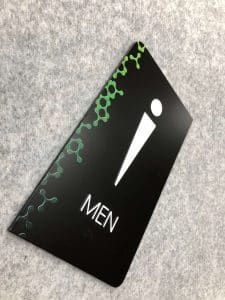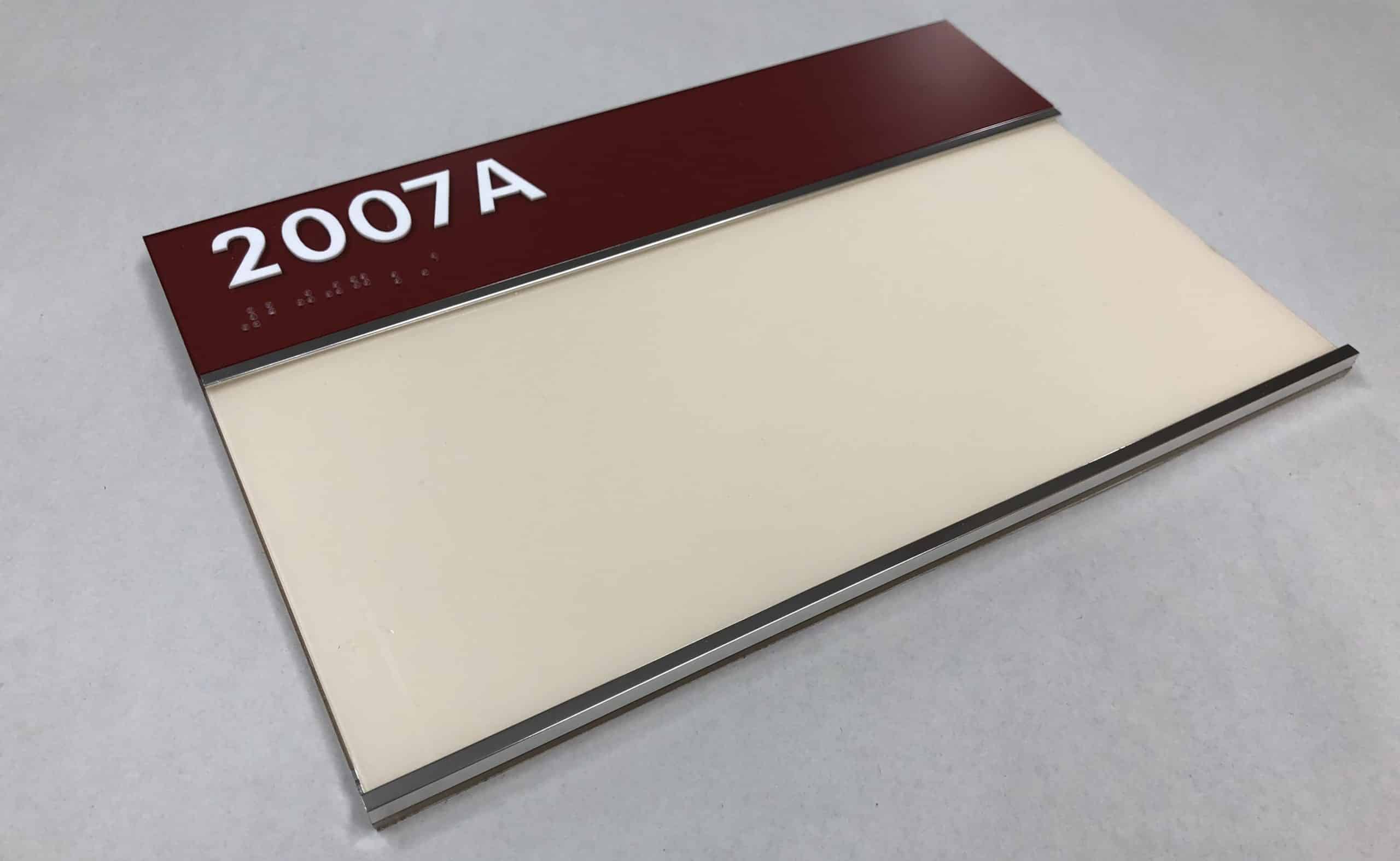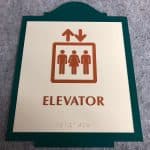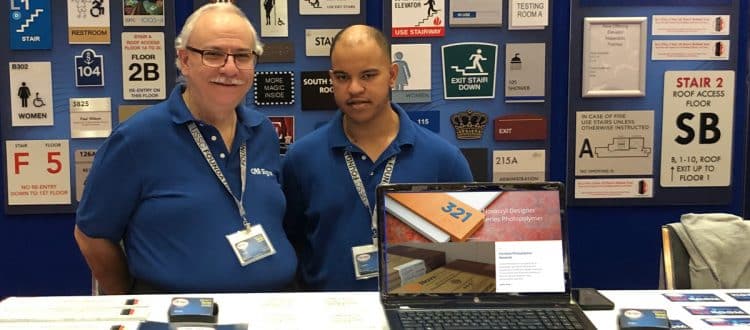Fabricator Spotlight: Cab Signs
It began as a hobby, an interesting way to make a few extra dollars, which for the teenage Chris Bayer seemed like a great idea. He invested $500 in a new Hermes engraving machine, set up shop in the basement of his parents’ house, snatched some printing industry advice from his older brother, and got to work.
 Signs were simple back in the late 1970s, a fact that helped as Chris got his nascent business off the ground. Always mechanically inclined, Chris liked the processes involved. “Creative skills are not my strength, but back then it was a good match for my abilities. I started making some money and reinvested the money so I could do more and attract new customers.”
Signs were simple back in the late 1970s, a fact that helped as Chris got his nascent business off the ground. Always mechanically inclined, Chris liked the processes involved. “Creative skills are not my strength, but back then it was a good match for my abilities. I started making some money and reinvested the money so I could do more and attract new customers.”
Looking for opportunities he went directly to sign shops and other print providers. “But I had to win them over from whoever they were sending sign jobs to. I’d walk into a shop with a display, some samples and a short presentation,” he recounts. “I knew it had to be good, very good, to get their attention. I was just a kid, but for the simpler signs of the day knew I had a chance because I could do work many shops didn’t want to do themselves.”
“I just wanted to get my foot in the door,” he continues, “and knew a lot was based on price and service. It was not unlike today in that respect. So I’d give a business owner a quote and they’d say, ‘you’re a dollar less!’ and I’d say, ‘then give me a shot.’”
Enough of them did. Chris likens it to a player on a basketball team telling his coach to give him just a few minutes on the court. “When you get a chance it’s all about what you do, what you can deliver. It was a personal thing for me. I kept at it, proved myself, word of mouth soon passed my name around and it went on and on.”

Forty years later CAB Signs, known today as “The Signmaker’s Signmaker,” is one of the leading sign fabrication trade shops in the New York metropolitan area. CAB’s 14,000 square foot shop in Brooklyn is the workplace for 25+ employees who orchestrate the art of sign production on a full range of surfaces and materials and are compliant with a host of local, state and federal requirements.
Still, it’s a competitive market. “We have no sales people,” says Chris. “To find prospects we go to trade shows and follow leads, but word of mouth is still very important. And we have to battle the internet, especially with respect to people who buy on price. For example, someone will call up needing a couple dozen black-and-white restroom signs. This is a commodity item and many younger buyers will decide solely on price. And they can Google some of this. So if someone is shopping on price for a generic restroom sign they should probably go to Staples. But if they need PMS colors, special paints or need to ensure ADA compliance, then we have a story to tell.”
 In fact, ADA signage looms large in CAB Signs repertoire. While it seems as if ADA rules have always been around, they didn’t take effect until the Nineties and have since become a critical part of modern signmaking. Virtually every building open to the public is required to have wayfinding and room identification signs in full ADA compliance. While this has generally been a boon to the sign industry, not all sign fabricators produce ADA compliant signs, so they turn to companies like CAB Signs to ensure ADA signs and placards meet every requirement and will pass muster with city, state and federal inspectors. A key part of this process at CAB Signs is photopolymer signs using technology from Nova Polymers, which has been approved as a vendor by the U.S. General Services Administration.
In fact, ADA signage looms large in CAB Signs repertoire. While it seems as if ADA rules have always been around, they didn’t take effect until the Nineties and have since become a critical part of modern signmaking. Virtually every building open to the public is required to have wayfinding and room identification signs in full ADA compliance. While this has generally been a boon to the sign industry, not all sign fabricators produce ADA compliant signs, so they turn to companies like CAB Signs to ensure ADA signs and placards meet every requirement and will pass muster with city, state and federal inspectors. A key part of this process at CAB Signs is photopolymer signs using technology from Nova Polymers, which has been approved as a vendor by the U.S. General Services Administration.
The CAB and Nova Polymers relationship spans some 15 years and has helped CAB Signs become a go-to trade shop in metro New York and beyond. The company uses two Nova Orbital X photopolymer processors, inkjet printers, and has adopted Workflow Manager to support a full range of ADA signage production. Together these ensure the image quality, accuracy and durability necessary for ADA sign production. In addition, CAB uses paints from Matthews Paint Company. “You can use almost any kind of paint on a sign,” notes Chris, “but will it hold up and perform over time? We’ve found Matthews paint delivers the best performance over time for signage applications.”
“We have become one of Nova’s preferred fabricators which has involved testing and demonstrating equipment for them as well as their recommending us as a fabricator. Our relationship with Nova is really just an extension of what we have always done: building relationships and simply doing the right thing.“

